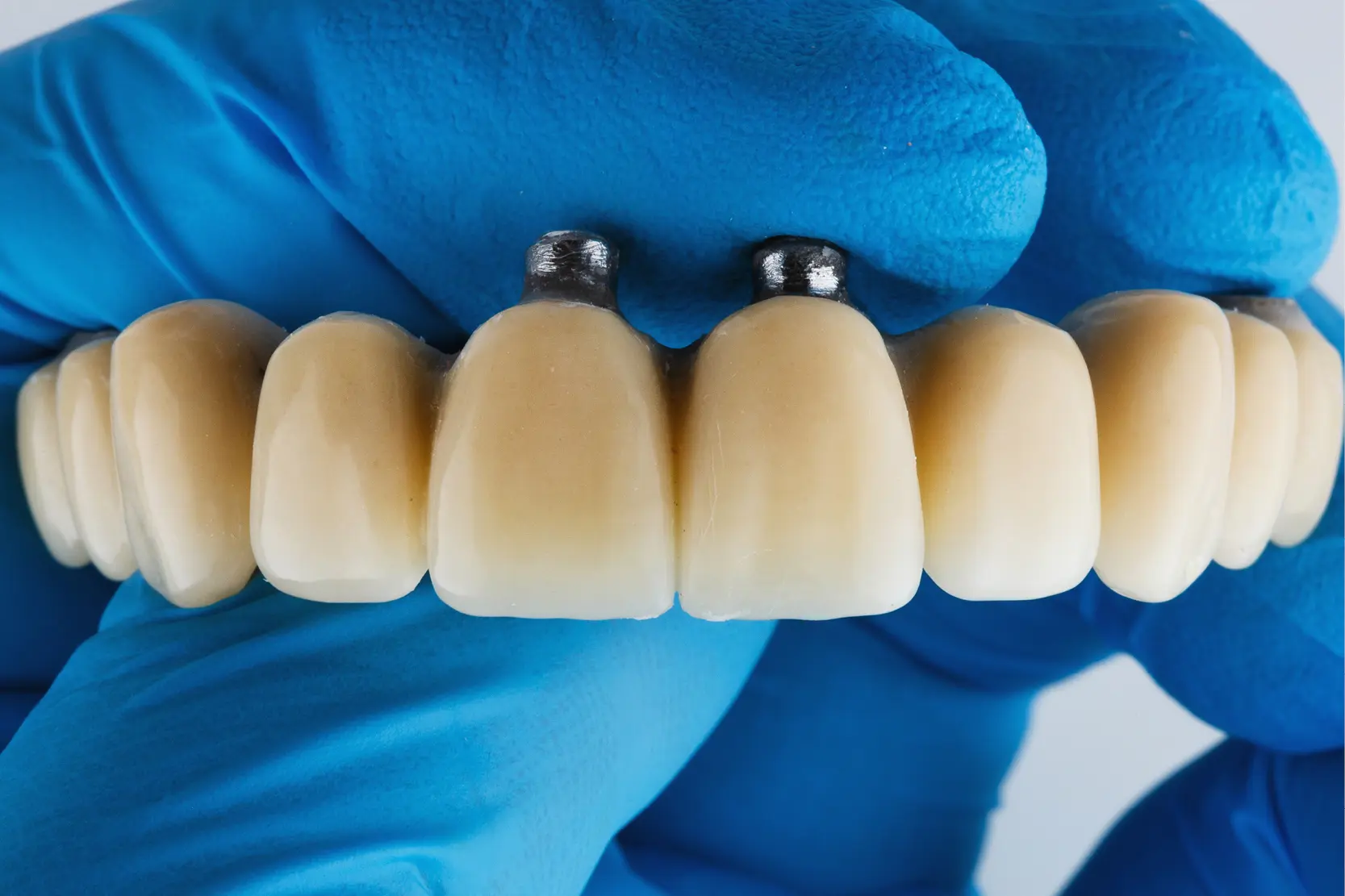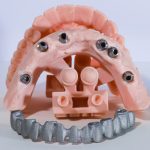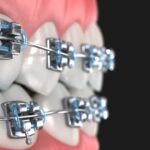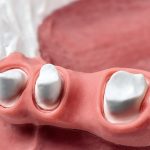
According to the Glossary of Prosthodontic Terms (GPT), a dental prosthesis is defined as “an artificial replacement (prosthesis) of one or more teeth (up to the entire dentition in either arch) and associated dental/alveolar structures; dental prostheses usually are subcategorised as either fixed dental prostheses or removable dental prostheses” (1).
A dental prosthesis can be manufactured using a single material, such as total removable prostheses, which are made with polymethylmethacrylate, or monolithic fixed restorations (in zirconia, disilicate, etc.) both on teeth and on implants, or it can be assembled using reinforcing structures or “frameworks”, coated with other more aesthetically attractive materials (2).
Dental prosthetic framework: definition and functions of materials
The GPT gives a broad and clear definition of what a framework is, defining it as “an interior or imbedded latticework or structural frame used to support some other objects. The framework is the skeletal portion of a prosthesis around which and to which are attached the remaining portions of the prosthesis. For dental prostheses, the framework may be any metal or combination of metals or ceramic material, with various forms, which provide rigidity to a dental prosthesis. Such a framework can be frequently used to support a prosthesis to natural teeth or dental implant abutments” (2).
The coating materials used to cover the external surface of the restorations must have different functions (3):
- aesthetic function, because they cover the external surface of the prostheses;
- mechanical function, because all oral functions are performed primarily on them;
- durability, as they must guarantee prolonged use in the oral cavity;
- biocompatibility, since they are the materials with which the patient’s intraoral tissue comes into contact most;
- ability to bond with the framework materials.
Dental ceramics for coating the prosthetic framework
Ceramics are definitely the best-known coating materials. Thanks to their translucency properties, their very low level of interaction with most liquids, gases, alkalis and acids, and also thanks to their stability over time, fracture resistance and toughness, they are considered the preferred choice for permanent veneered prostheses (4,5).
Ceramics used for dental prostheses can be distinguished according to their composition into:
- glass ceramics containing crystalline (feldspathic) fillers;
- lithium disilicate injection ceramics;
- glass-filled ceramics;
- densely sintered polycrystalline ceramics (3).
Application techniques for feldspathic ceramics
The ceramics used for coating frameworks are obviously feldspathic ceramics, which are applied to give an aesthetically attractive appearance to restorations with metal or zirconium frameworks in most cases (5,6).
These ceramics are applied in layers, starting from the opaque, innermost layer, whose function is to mask the framework, and produce the translucent effect of natural teeth (3).
In this respect, the ceramic masses (dentin mass and enamel mass) used by the dental technician during the coating phase are important, as are the application techniques used (7).
Heat pressing and powder/liquid application
These techniques can involve the masses being applied to the framework through heat pressing or stratification of powder/liquid and, as described in the literature about the framework ceramisation technique, they can influence the flexural strength and reliability of veneered restorations (7,8).
In particular, it was observed that heat pressing provides significantly higher flexural strength for veneered zirconium compared to the powder/liquid application probably because during the heat and vacuum pressing process itself, the vitreous ceramic layer is brought into closer contact with the zirconium structure (7,8).
Clinical complications: chipping
Flexural resistance turns out to be very important if we consider that the most common clinical complication with veneered prostheses is chipping or breaking of the ceramic coating, especially in the case of restorations with polycrystalline ceramic frameworks (9,10).
However, the incidence of chipping appears to be lower for fixed dental restorations with metal frameworks. The reason for this is that the covalent and intermolecular bond that forms between the metal alloy’s oxide layer and the ceramic’s opaque layer supports and reinforces the mechanical properties of the coating’s fracture resistance (11).
Coating’s bond strength
This type of bond does not form, for example, between metal and composite or between metal and polymethylmethacrylate, materials which can be used as coatings for fixed prostheses on natural teeth or implants (12).
The role of roughness, manufacturing technique and sandblasting of the framework
The bond strength between these materials appears to be mainly dependent on microretention of the framework, and therefore on surface roughness and microcracks, rather than on a real chemical bond (13,14).
Processes like sandblasting the framework with specific aluminium particles can definitely increase bond strength (15).
In this respect, framework manufacturing techniques can also play their role (16). For example, with regard to metal frameworks, additive production methods, such as selective laser melting and electron beam melting, which typically give rough restorations a greater final surface roughness, appear to be more functional in bonding with other coatings compared to subtractive techniques (16,17).
Use of metallic primers
It is also worth mentioning that, nowadays, there are also metallic primers comprising mostly sulphur-derived functional monomers and more recently hydrophobic phosphate monomers, which aim to form a direct chemical bond between the metals and opaque resin components.
These primers have been proven to increase bond strength between different metal alloys (titanium, chrome-cobalt, gold-palladium) and acrylic resins, especially when used in combination with noble alloys (13,14,18).
These forces are particularly important, especially in relation to more elaborate structures, for example frameworks on implants extended to the entire arch.
Framework design and macroretention
Furthermore, apart from the properties of the individual materials used, the design of the framework is also very important, as it must be designed taking into account the space to be given to the coating material to achieve an adequate resistance and aesthetic result (19).
The framework’s macroretention can be increased through using specific designs and drawings, for example by designing a substructure equipped with undercut or retention areas (20–23).
Influence of coating techniques on implant-prosthetic misfit
One major issue to consider, especially regarding multiple implant prostheses, is the influence of coating techniques on implant-prosthetic misfit at connection level (12,24).
The literature has highlighted how both resin and ceramic coatings increase the discrepancies at implant-abutment connection level in the case of metallic frameworks, made from titanium and especially zirconia (12,24,25).
In this case, with reference to pre-sintered zirconia frameworks, the effect on misfit seems even greater than that of chromium-cobalt and titanium frameworks (25). This probably seems to be a consequenceof the sintering process, which even alone could cause the distortion of extended frameworks (26).
Clinical and technical prospects for framework coating materials
Therefore, the subject of coating materials remains open. In fact, the more specific clinical and technical implications that the application of these materials entails are still being investigated.
Furthermore, the field of dental materials science has evolved very quickly in recent years and, thanks to 3D printing technologies, it seems to be destined for even more rapid expansion. As a result, further studies and research will need to be carried out to validate new coating techniques and materials in relation to the different types of framework.
References
- The Glossary of Prosthodontic Terms. The Journal of Prosthetic Dentistry. 2017 May;117(5):C1-e105.
- Shillinburg HT, et al. Fundamentals of fixed prosthodontics. Quintessence Publishing Company, 1997.
- Anusavice KJ, Shen C, Rawls HR. Phillips’ science of dental materials. 12th edition. Elsevier Health Sciences; 2012. 492–494 p.
- Lopez-Suarez C, Tobar C, Sola-Ruiz MF, Pelaez J, Suarez MJ. Effect of Thermomechanical and Static Loading on the Load to Fracture of Metal-Ceramic, Monolithic, and Veneered Zirconia Posterior Fixed Partial Dentures. J Prosthodont. 2019 Feb;28(2):171–8.
- Ortensi L, Grande F, Testa C, Balma AM, Pedraza R, Mussano F, et al. Fracture strength of 3-units fixed partial dentures fabricated with metal-ceramic, graphene doped PMMA and PMMA before and after ageing: An in-vitro study. Journal of Dentistry. 2024 Mar;142:104865.
- Ambré MJ, Aschan F, von Steyern PV. Fracture Strength of Yttria-Stabilized Zirconium-Dioxide (Y-TZP) Fixed Dental Prostheses (FDPs) with Different Abutment Core Thicknesses and Connector Dimensions. Journal of Prosthodontics. 2013;22(5):377–82.
- Lin WS, Ercoli C, Feng C, Morton D. The Effect of Core Material, Veneering Porcelain, and Fabrication Technique on the Biaxial Flexural Strength and Weibull Analysis of Selected Dental Ceramics. Journal of Prosthodontics. 2012;21(5):353–62.
- Aboushelib MN, de Kler M, van der Zel JM, Feilzer AJ. Effect of veneering method on the fracture and bond strength of bilayered zirconia restorations. Int J Prosthodont. 2008;21(3):237–40.
- Beuer F, Edelhoff D, Gernet W, Sorensen JA. Three-year clinical prospective evaluation of zirconia-based posterior fixed dental prostheses (FDPs). Clin Oral Investig. 2009 Dec;13(4):445–51.
- Roediger M, Gersdorff N, Huels A, Rinke S. Prospective evaluation of zirconia posterior fixed partial dentures: four-year clinical results. Int J Prosthodont. 2010;23(2):141–8.
- Pjetursson BE, Sailer I, Makarov NA, Zwahlen M, Thoma DS. All-ceramic or metal-ceramic tooth-supported fixed dental prostheses (FDPs)? A systematic review of the survival and complication rates. Part II: Multiple-unit FDPs. Dental Materials. 2015 Jun;31(6):624–39.
- Revilla-León M, Pérez-López J, Barmak AB, Raigrodski AJ, Rubenstein J, Galluci GO. Implant-Abutment Discrepancy Before and After Acrylic Resin Veneering of Complete-Arch Titanium Frameworks Manufactured Using Milling and Electron Beam Melting Technologies. J Prosthodont. 2022 Mar;31(S1):88–96.
- Choo SS, Huh YH, Cho LR, Park CJ. Effect of metal primers and tarnish treatment on bonding between dental alloys and veneer resin. The Journal of Advanced Prosthodontics. 2015 Oct;7(5):392.
- Matsumura H, Yanagida H, Tanoue N, Atsuta M, Shimoe S. Shear bond strength of resin composite veneering material to gold alloy with varying metal surface preparations. The Journal of Prosthetic Dentistry. 2001 Sep 1;86(3):315–9.
- Zandinejad A, Khanlar LN, Barmak AB, Tagami J, Revilla-León M. Surface Roughness and Bond Strength of Resin Composite to Additively Manufactured Zirconia with Different Porosities. J Prosthodont. 2022 Mar;31(S1):97–104.
- Schweiger J, Edelhoff D, Güth JF. 3D Printing in Digital Prosthetic Dentistry: An Overview of Recent Developments in Additive Manufacturing. J Clin Med. 2021 May 7;10(9):2010.
- Revilla-León M, Sadeghpour M, Özcan M. A Review of the Applications of Additive Manufacturing Technologies Used to Fabricate Metals in Implant Dentistry. Journal of Prosthodontics. 2020;29(7):579–93.
- Koizumi H, Naito K, Ishii T, Yamashita M, Yoneyama T, Matsumura H. Adhesive bonding of Ti-6Al-7Nb alloy and component metals with acidic primers and a tri-n-butylborane initiated resin. J Adhes Dent. 2012 Jun;14(3):283–92.
- O’Boyle KH, Norling BK, Cagna DR, Phoenix RD. An investigation of new metal framework design for metal ceramic restorations. The Journal of Prosthetic Dentistry. 1997 Sep 1;78(3):295–301.
- Drago C, Howell K. Concepts for designing and fabricating metal implant frameworks for hybrid implant prostheses. J Prosthodont. 2012 Jul;21(5):413–24.
- von Gonten AS, Medina T, Woolsey GD, Hill DR. Modifications in the design and fabrication of mandibular osseointegrated fixed prostheses frameworks. J Prosthodont. 1995 Jun;4(2):82–9.
- Kamio S, Komine F, Taguchi K, Iwasaki T, Blatz MB, Matsumura H. Effects of framework design and layering material on fracture strength of implant-supported zirconia-based molar crowns. Clin Oral Implants Res. 2015 Dec;26(12):1407–13.
- Staab GH, Stewart RB. Theoretical assessment of cross sections for cantilevered implant-supported prostheses. J Prosthodont. 1994 Mar;3(1):23–30.
- Revilla-León M, Sánchez-Rubio JL, Pérez-López J, Rubenstein J, Özcan M. Discrepancy at the implant abutment-prosthesis interface of complete-arch cobalt-chromium implant frameworks fabricated by additive and subtractive technologies before and after ceramic veneering. J Prosthet Dent. 2021 May;125(5):795–803.
- Yilmaz B, Alshahrani FA, Kale E, Johnston WM. Effect of feldspathic porcelain layering on the marginal fit of zirconia and titanium complete-arch fixed implant-supported frameworks. J Prosthet Dent. 2018 Jul;120(1):71–8.
- Torabi K, Vojdani M, Giti R, Taghva M, Pardis S. The effect of various veneering techniques on the marginal fit of zirconia copings. The Journal of Advanced Prosthodontics. 2015 Jun 1;7(3):233–9.
Would you like more information about Zhermack Dental products and solutions?
Contact us




 Zhermack SpA has been one of the most important producers and international distributors of alginates, gypsums and silicone compounds for the dental sector for over 40 years. It has also developed solutions for the industrial and wellbeing sectors.
Zhermack SpA - Via Bovazecchino, 100 - 45021 Badia Polesine (RO), Italy.
Zhermack SpA has been one of the most important producers and international distributors of alginates, gypsums and silicone compounds for the dental sector for over 40 years. It has also developed solutions for the industrial and wellbeing sectors.
Zhermack SpA - Via Bovazecchino, 100 - 45021 Badia Polesine (RO), Italy.


